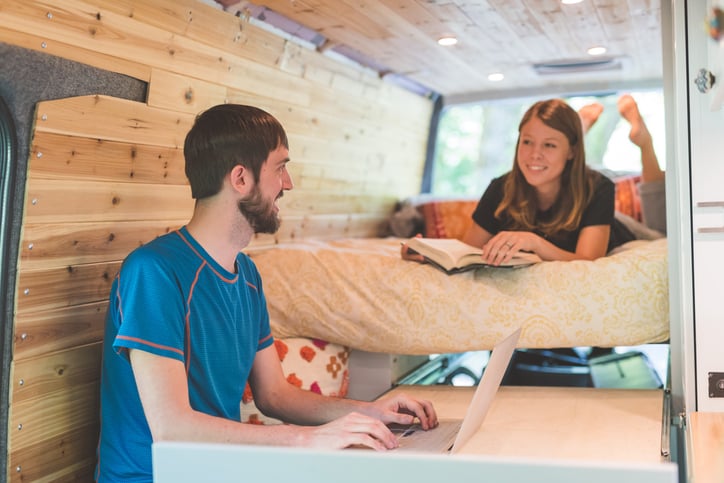
If your goal is to reduce your carbon footprint, then investing in a tiny home is the way to go. This, along with lower heating and electricity costs, mean you can reduce your impact on the environment around you.
There are other reasons to live in a tiny house. The average tiny house size is anywhere between 100 and 400 square feet, and monthly housing expenses can be as low as $600. Purchases of tiny homes have been increasing, and millennials trend toward the idea, with 63% of those recently surveyed saying tiny homes are the right homes for them.
The cost of construction for a tiny home can be as low as $12,000 (depending on design preferences), which can be considerably less than the cost to buy a larger home. Living off-grid means more self-sufficiency as well.
Now that we have talked about the bigger picture, it’s time to dive into the details of tiny home design. This means thinking about storage, maximizing the space you have, and the hinges that can help you do so. A counterbalance or spring-assisted hinge can withstand repeated use and is great for situations where the weight of the moving object would be significant for the user without the right hinge in place.
Dining Areas Benefit from a Hinge System
In the past, we have discussed the best way to optimize the kitchen space in a tiny home, including pull-out cabinets and a pull-out appliance shelf. This time, we are going to focus on the best ways to optimize the space where you eat - and will most likely spend a lot of free time.
A table with an expertly designed hinge system can be moved easily out of the way if you are looking for more floor space. It can also be adjusted to different heights for various purposes in your downtime. Motion control is your friend in tight spaces, and recessed hinges are also a benefit as they reduce the risk of injury while navigating.
Maximizing wall space is important in tiny home design as well. Storage comes in a variety of forms and can be visually appealing and useful at the same time. Try blocks instead of shelves on the wall, or use floating shelves to help spread out necessities without making the wall look too crowded.
There are numerous opportunities to include concealed storage in your tiny home. Build drawers into steps or other raised areas of the home.
You can also incorporate seating into areas of the cabinetry that aren’t being used for storage. This provides a solution to two typical problems at once. For a third benefit, use hidden hinges in the seating to allow for storage underneath as well.
Sleeping Areas
A tiny home can be any location that includes a roof over your head and a very finite amount of space within. Like in an RV, other tiny homes can benefit from furniture that serves more than one purpose. Consider installing a bed that folds away to become a sofa during the day.
Ceiling space should also not be wasted. Consider hanging storage that can be hidden behind a decorative material, or you can opt to simply hang shelves from the ceiling and provide that needed storage in an area without room on the walls or within the furniture.
When it comes to interior design, consider reflective surfaces such as mirrors, to give the illusion of more space within your tiny home.
Work From Home: Maximizing Office Space
Today’s society is focused on work-life balance, and many of those who opt to live in a tiny home also strive to spend more time working from that home. Moveable storage, such as a flip-down writing surface that doubles as the door for a storage compartment keep work materials right where you need them.
If that is not the ideal option for your work equipment, consider movable monitor arms and keyboard trays that can be tucked away when not in use. A mouse platform, with a mouse catcher, if you tend to be extra forceful and send the mouse flying on a tough work day, may also be worth installing.
Even working from home, you can’t ignore the ergonomics of your workstation.
When planning the color scheme for your office area, make sure to limit your plan to two colors. This, along with reducing seams, allows the room to feel bigger.
Start Designing Your Small Home with the Help of an Expert
Once you are starting to consider options for the tiny home design that best suits you, it’s time to speak with an expert about your hinge needs and the best way to make sure those hinges withstand repeated use. Contact a Weber Knapp expert today to get the conversation started.
.png?width=12000&height=2033&name=WeberKnappLogo_white%20(1).png)




